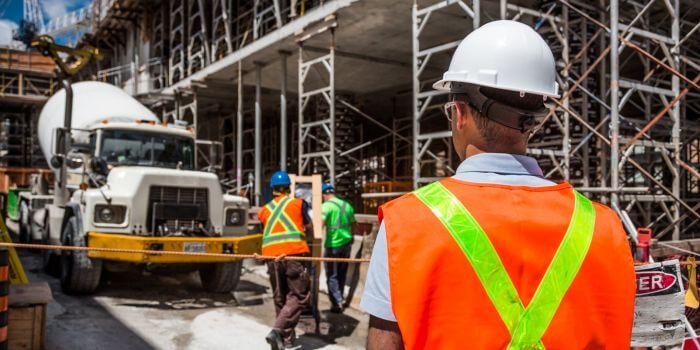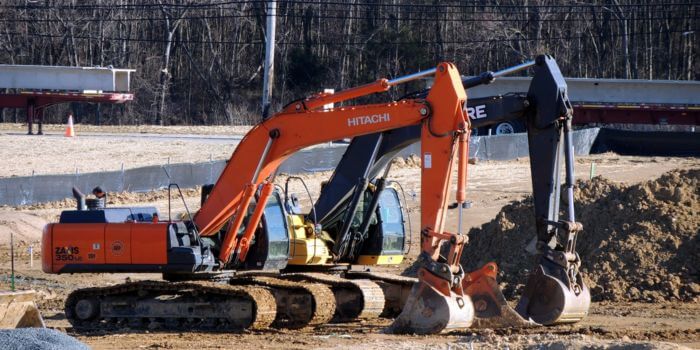Table of Contents
Transportation of construction materials
The timely completion of building projects relies heavily on efficiently transporting construction supplies.
However, transport safety must be prioritized to reduce potential hazards, protect workers and keep products undamaged.
Statistics show that a disproportionate number of construction site accidents are caused by vehicles.
The chance of accidents, material damage, and expensive project delays can be greatly reduced if construction businesses follow helpful advice and rules.
In this piece, we’ll look at several tried-and-true methods, supported by data and standard practice, for moving building supplies without incident.
Is Piling Necessary For Construction?
Piling, also known as a deep foundation or driven foundation, is a standard building method for ensuring the safety and longevity of a building.
The need for piling in a building project is conditional on several variables, such as the soil type, the required load-bearing capability, and the kind of structure being constructed.
To transfer the load to deeper, more solid soil layers, piling is often used when the soil close to the surface cannot hold the weight of the construction.
Hence piling is achieved with the help of a pile driver, and the process is known as pile driving.
Soil that is too weak or too compressible, regions with high water tables, and building on slopes are all common places to see it in use.
What Are The Typical Construction Transports?
The construction industry relies on several different transportation methods and construction equipments to bring supplies and personnel to and from job sites. Typical forms of transportation on construction sites include:
- Transporting concrete, aggregates, bricks, lumber, and other building materials is popular for trucks. Trucks range from small pickup trucks to large dump trucks that deliver bulk items.
- Construction sites often use cranes to help with moving and lifting big materials and machinery. They are particularly handy when lifting heavy objects like steel beams, precast concrete components, and construction equipment. Cranes are versatile machines that can either be mounted on trucks or used independently.
- The hydraulic arms and buckets of excavators and loaders make them useful tools in the construction industry. Large quantities of dirt, rocks, garbage, and building materials can be dug, lifted, and moved with their help. Excavators, loaders, and bulldozers are all commonplace in the earthmoving, landscaping, and construction industries.
- Forklifts are mechanical devices that lift and transport big items over relatively short distances. For moving pallets of goods, forklifts are ubiquitous in warehouses and construction sites. There is a wide range of forklift sizes and load capacities available
- Equipment used to reach and work from great heights includes cranes and aerial platforms like scissors and boom lifts. Installation, maintenance, and repair of buildings, bridges, and other structures all rely heavily on them.
- Long-distance transportation of aggregates, sand, and gravel are common uses for conveyor belts. They are frequently employed in large-scale concrete batching operations and aggregate processing facilities, requiring constant material handling.
- Site preparation, earthmoving, grading, and road building require specialized construction vehicles like bulldozers, graders, pavers, and compactors. These trucks have unique attachments and capabilities that make them ideal for certain construction jobs.
- Buses, vans, or other vehicles convey workers to and from construction sites. This ensures workers can safely get to and from huge projects.

Tips To Follow When Transporting Construction Materials
We will discuss some useful tips to ensure the safe transport of construction materials, protecting workers and the materials themselves.
- Plan and Prepare in Advance
Proper planning is crucial when it comes to transporting construction materials safely. Before loading the materials onto any vehicle, assess the items’ weight, size, and fragility. This information will help determine the appropriate type and size of the transportation vehicle needed. Ensure that the vehicle has the necessary permits, licenses, and certifications to transport the specific materials.
- Secure and Protect the Materials
It is essential to secure and protect the construction materials properly to prevent damage during transit. Use high-quality straps, chains, or ropes to secure the materials, especially if they are heavy or bulky. It is advisable to use cushioning materials such as foam or padding to protect delicate or fragile items from impact and vibration during transportation. Place waterproof covers or tarps over materials susceptible to moisture or adverse weather conditions.
- Load and Unload with Care
Loading and unloading construction materials require caution and adherence to safety guidelines. Ensure that the vehicle used for transportation has a stable and sturdy loading platform. Use appropriate equipment like forklifts, cranes, or hoists, depending on the weight and size of the materials. Distribute the load evenly to maintain balance and stability, reducing the risk of accidents during transit. During unloading, follow proper lifting techniques and never rush to avoid accidents and injuries.
- Secure Loose Parts and Debris
Before commencing transportation, ensure that loose parts and debris are secured or removed from the vehicle. Loose objects can become hazards if they shift or fall during transit. Regularly inspect the vehicle to identify any loose components that may pose a risk and promptly address them before transportation.

- Adhere to Traffic Regulations
Complying with traffic regulations is crucial for safely transporting construction materials. Ensure the vehicle is roadworthy, with properly functioning lights, brakes, and other essential features. Adhere to speed limits, maintain a safe following distance, and drive defensively to minimize the risk of accidents. Stay up-to-date with the latest traffic information and plan routes to avoid congested or unsafe areas.
- Train and Educate Personnel
Properly trained and educated personnel are vital for ensuring the safe transport of construction materials. Provide comprehensive training to drivers, loaders, and other personnel involved in the transportation process. They should be knowledgeable about safety protocols, proper loading techniques, and emergency procedures. Regularly reinforce safety awareness and conduct refresher training to update everyone on the latest practices and regulations.
- Regular Maintenance and Inspection
Regular maintenance and inspection of transportation vehicles are essential to ensure their safety and reliability. Create a maintenance schedule and conduct routine vehicle inspections, including brakes, tires, lights, and suspension. Any defects or issues should be promptly addressed to prevent accidents during transportation.
Conclusion
Transporting construction materials safely is crucial for a smooth and successful project. So remember, buckle up those materials, secure them tightly, follow the rules of the road, and keep the construction site rocking without mishaps. Happy transporting!
FAQs
Who is responsible for ensuring the safe transportation of construction materials?
The responsibility for ensuring the safe transportation of construction materials lies with multiple parties involved, including project managers, contractors, drivers or equipment operators, and workers involved in loading and securing the materials. It requires collaboration and adherence to safety protocols by all stakeholders.
What are the consequences of unsafe transportation of construction materials?
The consequences of unsafe transportation can include injuries or fatalities, damage to materials or property, project delays, additional costs for replacement or repairs, legal liabilities, and reputational damage to the construction company or individuals involved.
Are there any regulations or guidelines for transporting construction materials?
There are regulations and guidelines to ensure the safe transportation of construction materials. These may vary depending on the region or country but generally include traffic regulations, weight restrictions, securing and packaging guidelines, and safety standards for vehicles and equipment.
Also, Read
Open-Cut Mining – Everything That You Should Know About
19 Types of Heavy Equipment Used In Construction
11-Difference Between PERT and CPM
What is Pile Foundation? Types of Pile Foundation